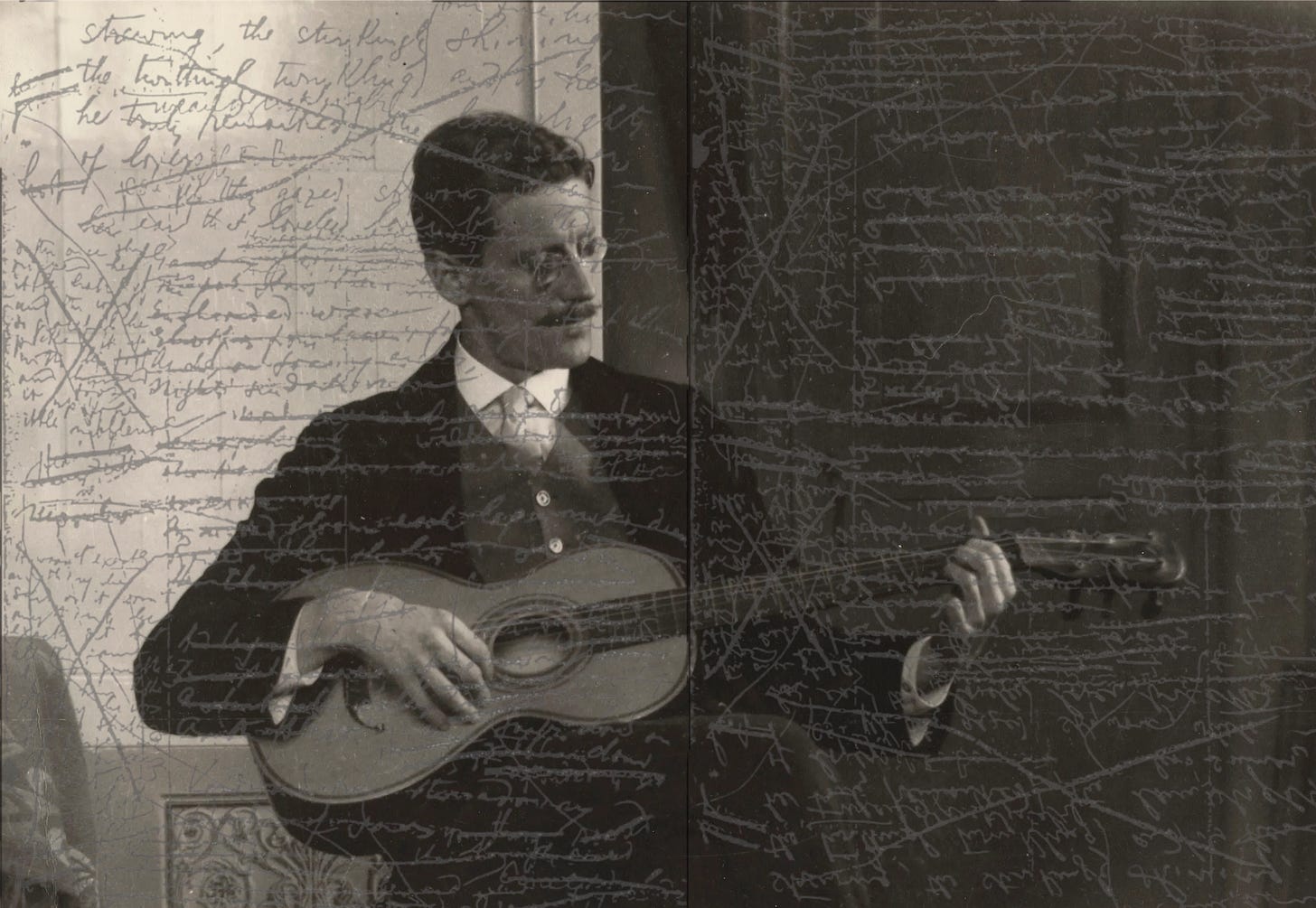This is the second in a series of posts for paid subscribers in which I share my research on the notion of the “end of art”—the theory that art is a thing of the past and that we have arrived at a cultural dead-end. These notes are the result of thorough reading and interpretation, and contain quotes from obscure sources that are invaluable for anyone who wants to understand the crisis of nihilism, the cultural history of the west, Hegel’s “End of Art” thesis, and the possible future of art.
From the Nachlass, 4/3/25-4/23/25. Thoughts on Joyce, Adorno, Barnett Newman, Richard Diebenkorn, Heidegger, Hölderlin, Agamben, Vico, etc.
***
Joyce named the second poem in Pomes Penyeach “Watching the Needleboats at San Sabba.” San Sabba is a building on the Adriatic coast in the city of Trieste, where Joyce lived for several years in self-imposed exile, teaching English and music to make ends meet. Initially created to be a rice-husking facility—what Joyce knew it as—San Sabba was later converted into a detention center by the Nazis, a transit hub through which Jews would be cataloged and deported to concentration camps. Its gas chambers were installed by Erwin Lambert, an SS official who, as part of the Action T4 euthanasia program, was tasked with building chambers in Hartheim, Sonnenstein, Bernburg, and Hadamar, and later, during Operation Reinhard, with the wholesale assemblage of the Sobibor and Treblinka death camps. Due to his “prowess” at designing large gas chambers, Lambert was known as the “traveling construction boss.” Holocaust survivor Jankiel Wiernik said Lambert struck him as “good-hearted,” “humane and likeable,” a man who merely wanted to focus on his “engineering work”; when the Jewish workers, whom he treated very well, showed him all the piles of bodies that had been exterminated by gas, he became pale and frightened, and turned his pained face away from the area “so as not to see what was going on.”12
***
Jay Bernstein, in his essay “The death of sensuous particulars: Adorno and abstract expressionism,” takes on the problem of the foreclosure of the aesthetic experience by instrumental rationality, a major strain in Adorno’s work on art. He endeavors to show that abstract expressionist painting is an antidote to the destruction of art brought on by the commodified world we find ourselves in, where all traditional human signifiers of meaning are sold back to us at the cost of our freedom—in the form of kitsch art.
Bernstein claims that abstract expressionist art works, “at their best,” provide a sensuous particular that matters “in itself,” opposing the universal “for us” of instrumental society. His argument runs as follows: by pulling away from “genre, representation and symbol, but also from ‘memory, association, nostalgia, legend, myth’—the ‘devices’, as Barnett Newman called them, ‘of Western European painting,’” these works defy all forms of identifying mechanisms (the kinds that AI seizes upon to churn out their mimed impressions of human meaning) besides their sheer presence. As such, they combat the destruction of “societal abstraction,” or the fragmentation of society caused by the instruments that have turned on us and turned us into their slaves. While the capitalistic, scientistic enlightenment promised to appropriate the world for the sake of human ends (“happiness, freedom from fear, equality and liberty”), its means “slipped from the noose of the ends and bec[a]me universals themselves, vanquishing their ends.” We became the materials to heat the great machines, machinating without end, as Nietzsche said in Human, All Too Human.
Keep reading with a 7-day free trial
Subscribe to Primitive Accumulations to keep reading this post and get 7 days of free access to the full post archives.


